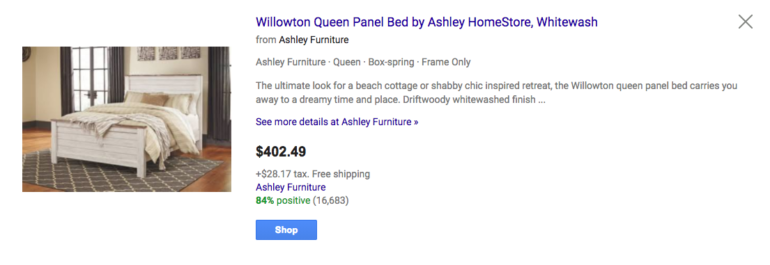Paid Search and Shopping campaigns in Google AdWords are sometimes looked at as separate entities and in other circumstances users don’t even realize the difference in targeting tactics between the two. They do run quite a bit differently on the same network, which can cause confusion. Sometimes, as online advertisers, we get questions such as, “which keywords are we targeting with our shopping campaigns” – which then leads to a long winded explanation around how Search and Shopping differ from a targeting perspective.
With that said – Paid Search and Shopping have more similarities than differences, and using these similarities to help each of these separate advertising strategies learn from each other will help eCommerce companies take advantage of one advertising market to help another.
Find Queries that are Converting in Shopping and add them as Keywords on the Search Side
Just because you can’t target keywords in shopping, doesn’t mean you can’t run query reports. Typically these query reports are used to add negative keywords to your shopping efforts to make sure you’re ads do not show up for searches you don’t want to be showing on.
However, you can also find top converting query reports and add them to your search campaigns. This can be an easy report to run. Simply download your keyword lists, download a Search Term report with your shopping campaigns filtered and then filter out your top performing Search Terms. Once you’re there – it is a simple VLookUp in Excel to see if the performing queries live in the Search account yet.
Use Top Converting Keywords on the Search Side to Help with Product Names and Descriptions in Your Shopping Feed
Dive into your keywords categorically and relate them back to products. Digest which keywords are converting well, and make sure to have those terms in Product Titles or Product Descriptions. This will help on a few levels:
- Your product titles and descriptions will now use wording that has proven to connect with users
- Your product ads could potentially show more frequently on searches that have proven to convert in the past
Overall this helps to align your Search success with your shopping efforts in order to get better performance out of your shopping campaigns.
Compare Shopping vs. Search ROAS levels by Category
The counter argument to marrying search and shopping efforts is that it might be that on some segments (typically higher priced items) search may perform better and in others (maybe lower priced items) shopping performs better. You could say the same potentially on demographics, devices, etc. that could be looked into.
When you notice variances between performance on shopping verse search within certain categories – budget accordingly! If you’re a furniture company for example and notice that the cheaper the furniture the better the ROAS on Shopping, but the more expensive the furniture the better the ROAS on Search – then be sure to budget accordingly. If you see the following performance:
Then, you’d obviously want to max out the Search markets for Couches and the Shopping market for your chairs with the current bids at hand in order to get those ROAS numbers on a larger portion of your budget.
Overall Shopping and Search typically perform well together, but that doesn’t mean you shouldn’t have a budgeting plan in place based on which avenue performs better for different categories. This will help you spend your advertising funds as efficiently as possible.
Use Search Ad Test Findings to Adjust Product Description in the Feed
Similar to using top keywords to add to Product Names and Descriptions – using ad test findings to adjust descriptions can also be helpful. If something wins in an ad test, it may also when as an additive to a description, and help you beat the competition in the shopping landscape as well.
Sticking with the furniture theme, a couple of examples could be:
If Ashley Furniture saw that phrases such as “dreamy time and place” in their ad copy improved conversion per impression numbers on search – then maybe they’d adjust the descriptions on their products that match this copy as seen here:

Or, if Houzz saw that using terminology such as “Rich fabrics and trims” worked well in their copy (maybe more realistic search copy example) – then that could be why they’d set their description as seen here:
The idea here remains the same – as to speak to the user in a consistent manner across Search and Shopping advertisements, and use winning wording in one area as a great starting point in another. Overall this is another good tactic that helps to use Search efforts in order to help your shopping campaigns.
Final Thoughts
A lot of companies separate their Search and Shopping efforts as two completely different avenues, some consider Shopping to be a part of the Search efforts and treat them exactly the same. At the end of the day segmenting them from a budgeting perspective may be the best route to take, but separating those efforts completely can be very costly to your bottom line. As they help each other if you are using them in the right ways.